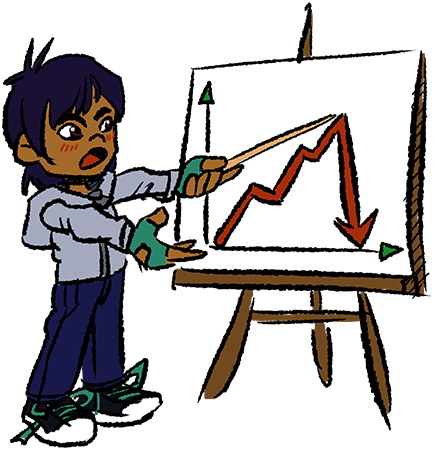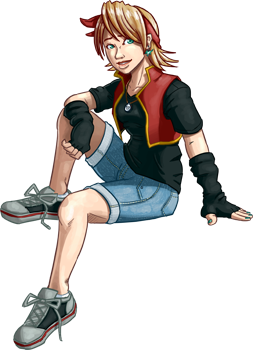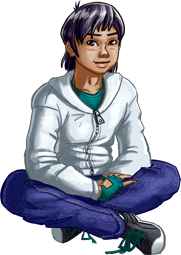Talking about whether an indie game was successful or not is difficult, because you first you have to quantify “success”. It’s easier when talking about a game made by a big studio, because then you can break it down by the amount of money taken in, and then compare it to how much was spent to make it, advertise it, and distribute it. It’s harder with indie games, because often there isn’t really a budget. Sometimes the game is made in the developers’ spare time with free tools on equipment that was long ago bought and paid for. With other games the developers may be working on them full time, but they’re not putting money directly into finishing the game so much as just paying bills and buying groceries, and often with freelance work to back them up.

When Another Star came out, I said that the game needed to take in just 100 sales in the first three months in order for me to consider it a success. The game took about nine months on-and-off to make, so obviously 100 copies of a ten dollar game wouldn’t give me back the money it took just for me to exist during its production—let alone the extra six months that the version 3 update took! However, it would help me pay for some of the software and equipment specifically bought for game development (not to mention the $100 I sunk into getting the game into Steam Greenlight). More importantly, though, it would show me that there was an interest in what I was doing. If people liked the game and were willing to buy it, then that meant it was worth continuing on and making a second commercial game in the future.
Sadly, Another Star didn’t achieve even that. Despite a rocky but somewhat promising start, the game was a commercial flop. After a year, the game still only managed about 80 sales across all retailers, and most of those were not at full price. Granted, Another Star had over 2,000 sales in an IndieRoyale Bundle, but my share of each individual sale was literally tallied in cents. And then, of course, Desura’s new owner Bad Juju Games declared bankruptcy, so I never did even get the money from that. In excess of $500 dollars from Desura and IndieRoyale down the drain!
And then something magical happened. In March, I got a sudden email from Steam. By pure attrition, Another Star had made it through Steam Greenlight. It never did reach the top 100. (Just to give an idea of how low the bar to entry has continued to drop, as of this moment even the #20 game on Greenlight has less “yes” votes than Another Star ever did.)
Now, a lot of people say that indies don’t need Steam. That we can just put our game up anywhere and do just as well so long as our game is good enough. The numbers say otherwise.
In just over 12 hours on Steam, the game had outsold any other single retailer (not counting IndieRoyale), and at nearly full price. In less than 72 hours, it had outsold every other retailer combined (again, not counting IndieRoyale). By the end of the first week, the game sold enough that it had doubled its lifetime income (this time even counting IndieRoyale, though I’ll never see that money).
Another Star has been on Steam for about three weeks now. Whereas I used to count the number of days (or weeks, or months) between sales, now I am counting the number of sales per day. At this point, it’s usually only two or three, but they’re still continuing to add up quickly. Monday was my first day since launch without a single sale, and then I got five yesterday, as if to make up for it. As of this moment, Another Star has made just under 200 sales on Steam and is on over 2,000 wishlists. And I’d say a big part of the credit here goes to Valve’s Steam Discovery Update which, although terrible at its initial launch, has been improved greatly and even now puts the game in front of people by showing up on the main store page as a “recommended for you” title. People are not only playing the game now, they’re enjoying it, posting their screenshots on Steam, and even discussing it in the Steam forums.
There are a lot of people that claim that Steam is getting too crowded. However, even having to vie with all the other titles on the storefront for attention, Steam is probably the single greatest thing that’s ever happened to the game. No, the game isn’t going to generate enough for me to live on. If I’m lucky, it’ll at least cover the cost of the MacBook I bought to do the OS X version of the game. But now I can say, without a doubt or a hesitation, that the game is a success.
And, moreover, because of it, I can say that Vision Riders will be releasing another game.
A huge, huge thank you to each and every one of you that bought the game. You’re all amazing.



I’m glad to hear you will continue developing games. 🙂
I’m still not a fan of Steam myself, but I don’t mind it as long as developers don’t release their games on Steam only.
For games with basically no prior fanbase I guess other stores aren’t really useful, because there simply isn’t enough visibility for them. It works better if you already have a large fanbase, then you don’t rely too much on Steam anymore.
Steam is still a lot relying on luck though… like getting picked as recommended game.
By the way, ever read Jeff Vogel’s article considering the flood of indie games?
Here’s an interview that also links to the article: http://www.nodontdie.com/jeff-vogel/
I also discussed about it starting here: http://spiderwebforums.ipbhost.com/index.php?/topic/21718-heres-an-interview-with-lord-vogel-read-it/page__st__70#entry284983
I haven’t read that interview, but I did read his original article way back when he posted it. Tried to dig up my thoughts on it from way back then, but I can’t seem to find them.
It’s been a long time since I’ve gone over it so I don’t remember the exact content of the article, but my feelings on the “indie bubble” in general can be boiled down to this:
In order for the indie bubble to burst, there must first be an indie bubble.
The ratio of people making money in indie games to the people not making money really hasn’t changed all that much. What did change is that indie games became a buzz word, so more people starting paying attention to the marking hype around them. There have always been indie game failures, but now-days we also hear more about those failures, unlike before when most people were just talking about the successes and overlooking everything else.
The business of making games has always been hard. Heck, selling entertainment in general is exceedingly difficult and always has been, especially before the Internet was a thing. Getting noticed is incredibly hard. I’ve been working on making my own games since well before ‘indie games’ was even a term anyone used. I know people like to talk about there being a sort of indie golden age during the 2007-2013 years or so, and they’re not entirely wrong, but having been around since well before that, I honestly don’t see it. Indie games become more commercially viable, yes, which is why more people were doing them, but making money off them was still never easy.
Well, as I mentioned in the linked thread a bit further down, for me it was quite noticable, simply in terms of finding games I enjoy.
A few years ago, I was in a situation where I simply had no games to play, because hardly anything I was interesting in was being released at all.
Then around 2012/2013 more and more interesting indie games were released, so I started finding games for me again. A lot of genres that I really loved and haven’t seen released for like 10-20 years suddenly appeared. I was happy.
But then only one year later, I already noticed that it became realy hard for me to even just keep track of all the games released. In a single week you now have like 20 new games, but it gets super hard to find them again if they don’t show up in a bundle or a sale.
So yeah, I can feel that. I don’t think these games have always been around and nobody knew about them. They really weren’t being released.